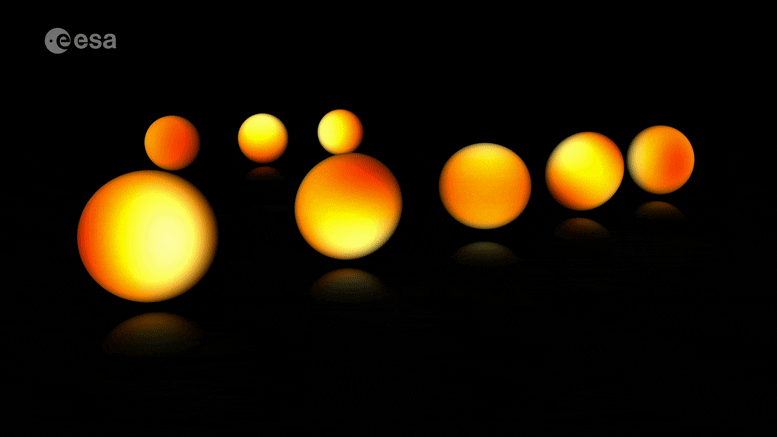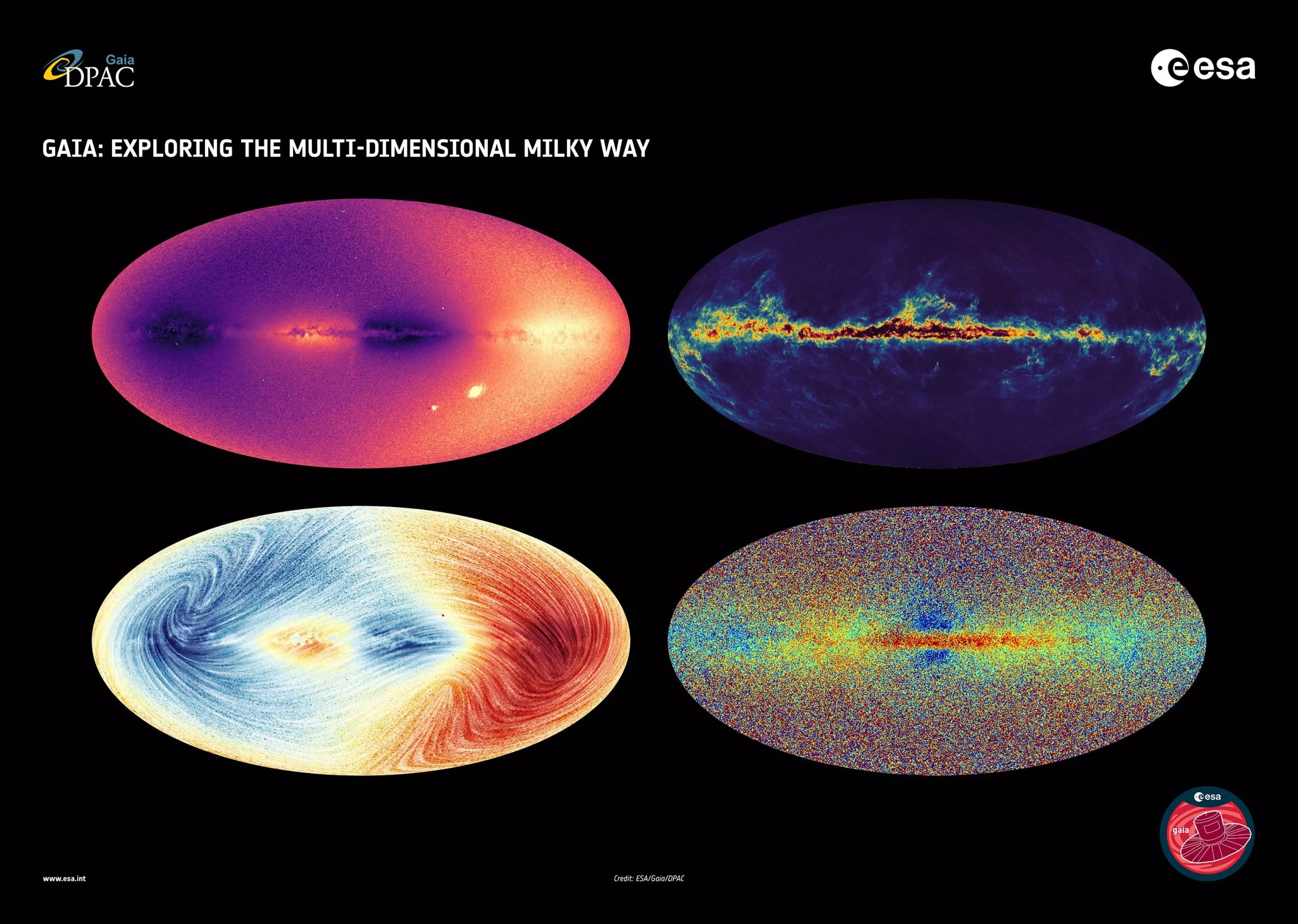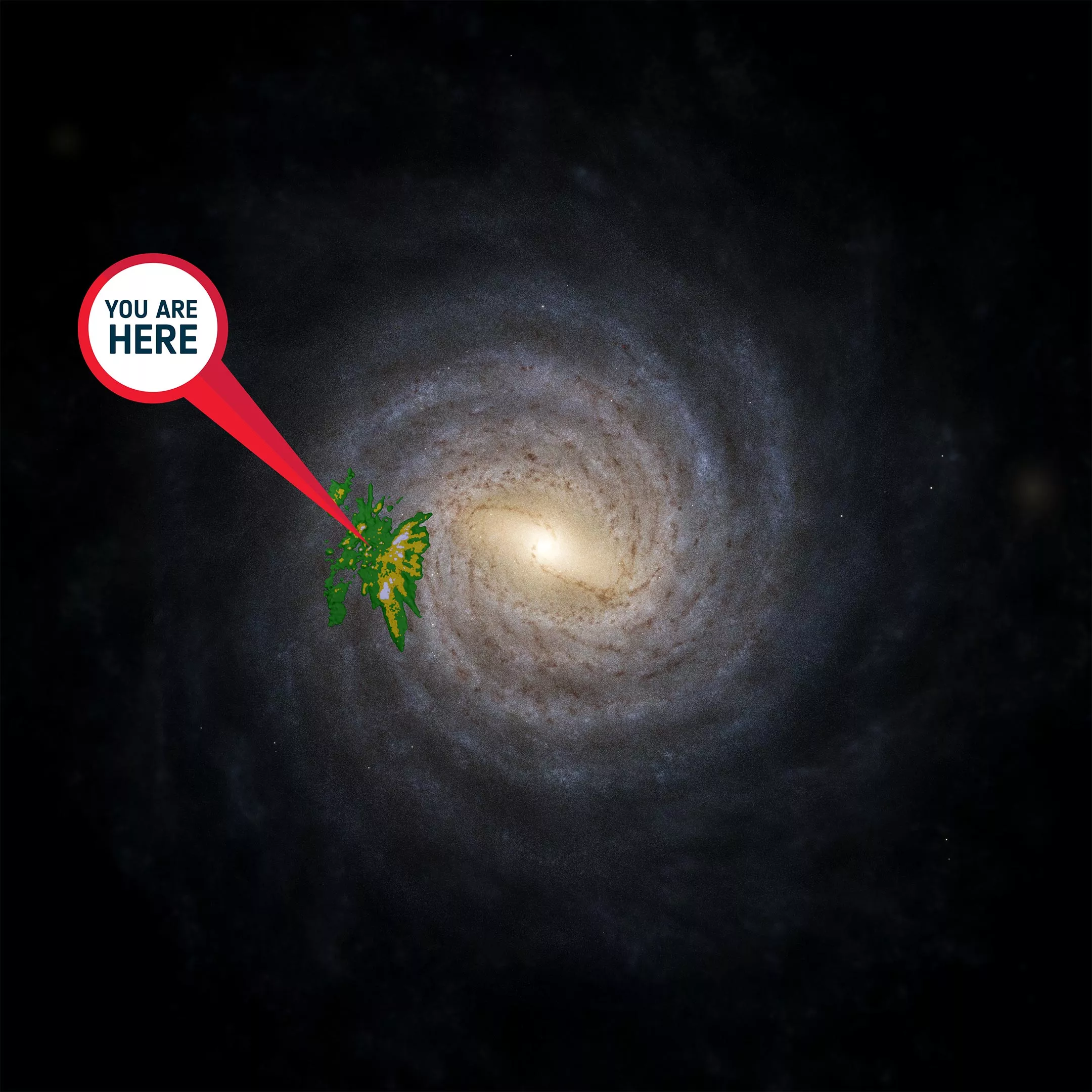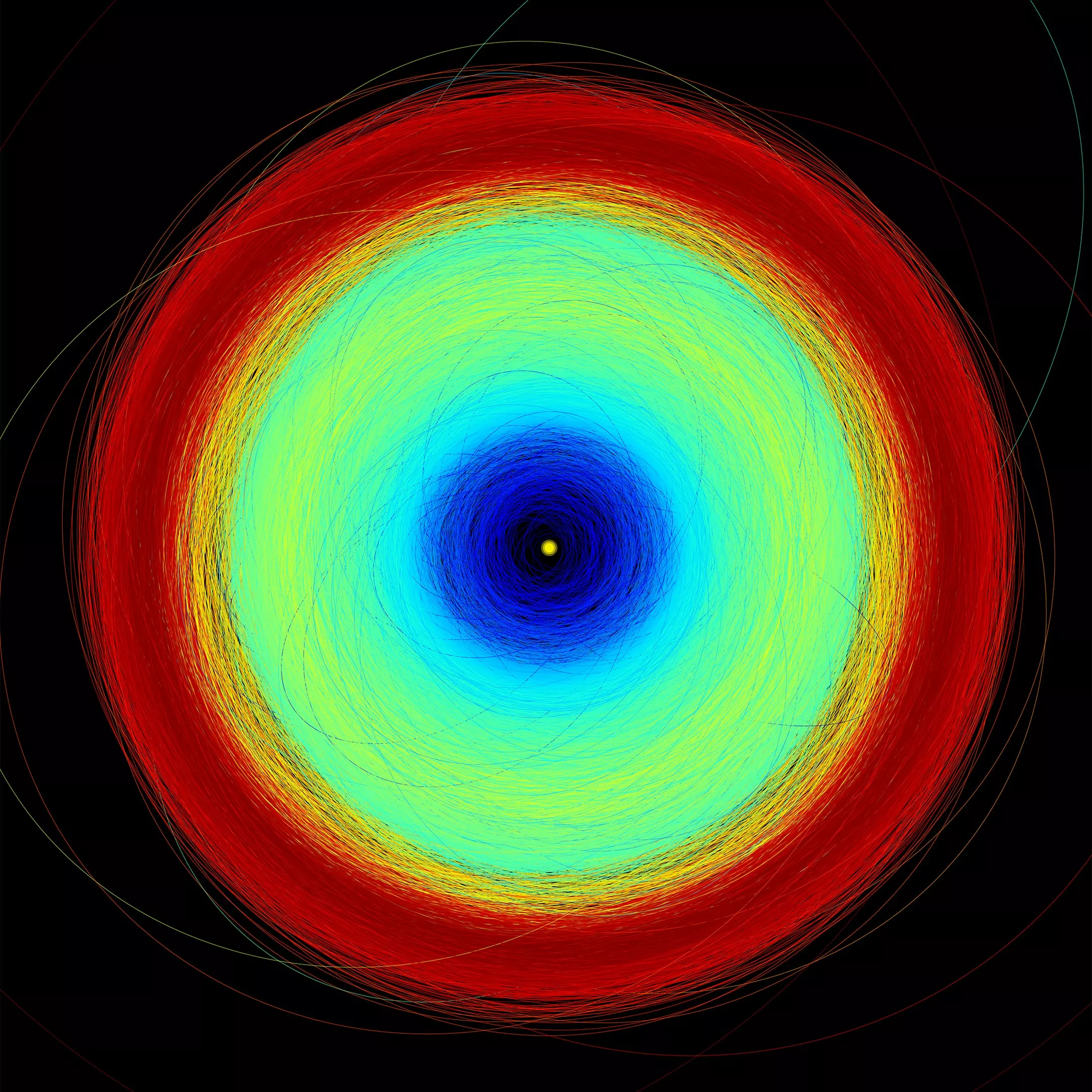Gaia is a mission of the European Space Agency (ESA), which aims to draw accurate three-dimensional maps of more than one billion stars in the entire Milky way and other regions. Although it was launched in 2013, it is still trying to map the motion, brightness, temperature and composition of stars in our galaxy.

Along the way, it has made many discoveries, such as detecting the shaking of the Milky Way galaxy, observing nearly 500 explosions of the galactic core, the crystallization of white dwarfs, and the discovery of a 1billion year old stellar river. In addition, it also revealed the total weight of the Milky way, directly measured the Galactic rods in the Milky way, the mysterious fossil spiral arms in the Milky way, and a new member of the Milky way family.
Today (June 13 local time), Gaia released its third complete observation data set. The first release took place on September 14, 2016, and the second on April 25, 2018. On december3,2020, they made the third early data release, which revealed detailed data of more than 1.8 billion stars. All these data are helpful to reveal the origin, structure and evolutionary history of our Milky Way galaxy.

Today (June 13, 2022), the Gaia mission of ESA released a new data treasure house about our home galaxy. Astronomers describe strange "star quakes", stellar DNA, asymmetric motion levels and other fascinating insights in the most detailed survey of the Milky Way galaxy to date. This enables astronomers to reconstruct the structure of our home galaxy and its evolution over the past billions of years, and better understand the life cycle of stars and our position in the universe.
What are the new contents of the third data release
Gaia's third edition of data contains new and improved details of nearly 2billion stars in our Milky Way galaxy. The catalog includes new information about chemical composition, star temperature, color, mass, age, and the speed at which the star moves toward or away from us (radial velocity). Most of this information is revealed by newly released spectroscopy data, in which starlight is divided into different colors. These data also contain some special subsets of stars, such as those whose brightness changes with time.
The new contents of this data set also include the largest catalog of binary stars so far, thousands of objects in the solar system and millions of galaxies and quasars outside the Milky way.
Starquake
One of the most surprising findings in the new data is that Gaia can detect starquakes - tiny movements on the surface of stars that change the shape of stars, which was the original purpose of the observatory.
Gaia has previously discovered radial oscillations that lead to the periodic expansion and contraction of stars and the preservation of their spherical shape. But it has now found other tremors that are more like large-scale tsunamis. These non radial vibrations change the overall shape of the star and are therefore more difficult to detect.
Gaia found strong non radial earthquakes in thousands of stars. In addition, it has found such vibrations in previously rare stars. According to current theory, these stars should not have any vibrations, and Gaia did detect these vibrations on their surfaces.
"Starquakes have given us a lot of knowledge about stars, especially their internal operations. Gaia is opening a gold mine for the 'seismology' of massive stars," said Connie Aerts, a Gaia research member from the University of Leuven in Belgium.
Stellar DNA
The composition of stars can tell us where they were born and how they will travel later, thus helping us understand the history of the Milky way. With the release of the latest data, Gaia revealed the largest chemical map of the galaxy and combined it with three-dimensional motion.
Some stars contain more "heavy metals" than others. During the big bang, only light elements (hydrogen and helium) were formed. All other heavier elements astronomers call metals are built inside stars. When stars die, they release these metals -- called interstellar media -- into the gas and dust between stars, from which new stars form. Active star formation and death will lead to a more metal rich environment. Therefore, the chemical composition of a star is a bit like its DNA, which provides us with key information about its origin.

Through Gaia, scientists have seen that some stars in the Milky way are made of primitive material, while other stars such as our sun are made of material enriched by previous generations of stars. Stars closer to the center and plane of our Milky Way galaxy are richer in metals than stars farther away. Gaia also identified stars that originally came from galaxies different from ours based on their chemical composition.
Alejandra recio Blanco of Observatoire de la C ô te D'azur in France pointed out: "Our galaxy is a beautiful melting pot of stars. This diversity is extremely important because it tells us the story of our galaxy formation. It reveals the migration within our galaxy and the accretion process from external galaxies. In addition, it clearly shows that our sun and we belong to a changing system, formed by the combination of stars and gas from different sources." He is a member of the Gaia project.

Gemini, asteroid, quasar and more
Other papers published today also reflect the breadth and depth of Gaia's discovery potential. A new catalog of binary stars introduces the mass and evolution of more than 800000 binary systems, while the survey of new asteroids composed of 156000 rock bodies is deeply exploring the origin of our solar system. Gaia also revealed information about 10million variable stars, mysterious macromolecules between stars, quasars and galaxies outside our universe.

Timo prusti, a Gaia project scientist at ESA, said: "Unlike other missions aimed at specific objects, Gaia is a survey mission. This means that while conducting many surveys of billions of stars in the whole sky, Gaia will inevitably have discoveries that other more focused missions will miss. This is one of its advantages. We can't wait for the astronomical community to study our new data in depth to discover more galaxies and their surroundings than we think."